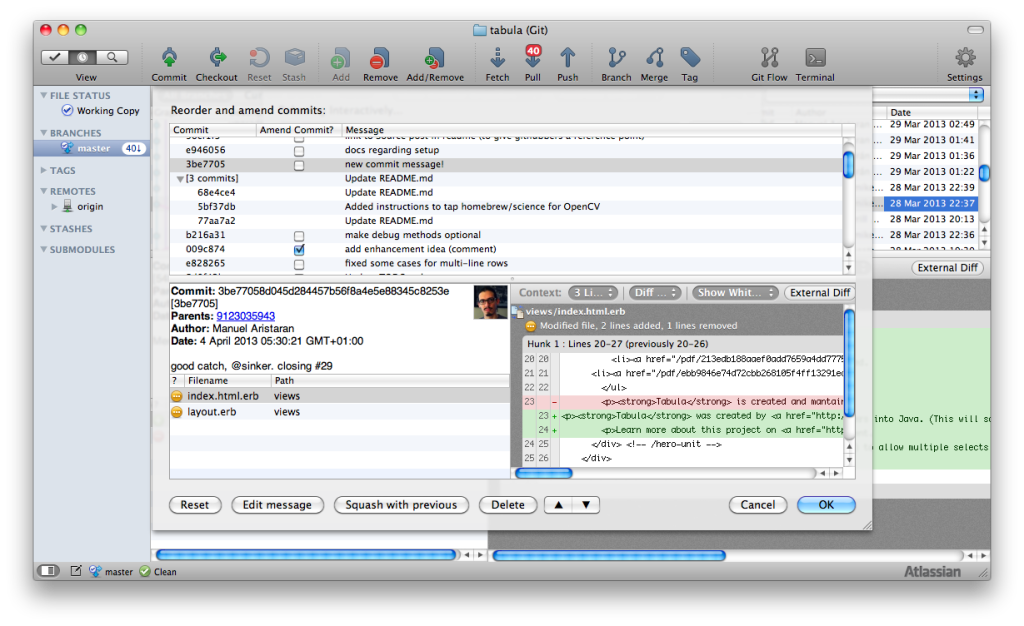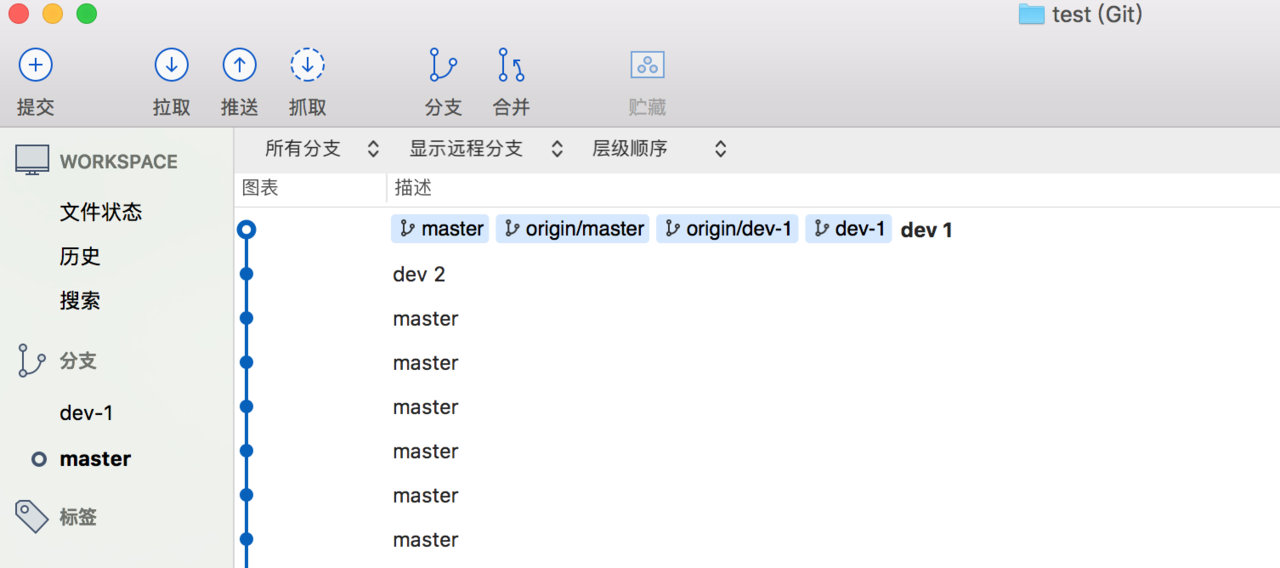
The git merge command calls this a fast-forward merge, although there's no actual merging involved. The shortcut that Git may be able to take is to simply check out their latest commit while dragging your branch name forward. Git cannot take any shortcuts here and you will get a full-blown merge. You have new commits and you got new commits from them, and git merge has to use its simple-and-stupid rules to combine the work. Combining your lack-of-work with their actual work is easy and git merge will take a shortcut if you allow it. Perhaps you did no work and they did do some work. Perhaps you did some work and they did nothing you got no new commits there's nothing to do and git merge does nothing again. There's literally nothing to do, and git merge does nothing. Perhaps you did no work and they did no work. There are, however, four possibilities here: They just work based on "lines" in diffs. These rules have no clue as to how or why you did the work, or what anything you changed means.

Git will attempt to take work you have done, if you have done any, and work they have done, if they have done any, and combine the work, using simple and stupid automated rules. The git merge command is pretty big and complicated but it has a meaning that's pretty simple to describe: Merge means combine work. Initially, that second step was always git merge. To use the new commits, you need a second step. You have access to the new commits, but nothing is actually using the new commits yet. The reason to have a step 2 at all is simple enough: git fetch obtains new commits from some other Git repository, stuffing those new commits into your own repository where you now have access to them. So git pull means run git fetch and git pull origin somebranch means run git fetch origin somebranch.Īssuming the first step succeeds, git pull runs a second Git command. Most, but not all, of the arguments you give to git pull are passed directly to git fetch. Well, for some people (me), it does too much others like that it does this much but in fact, it does two jobs, each of which has its own separate Git command: The first thing to know is that git pull does too much stuff. How can I merge in what's in the other branch into master, why is this message coming up and what effect do all the suggestions in the hints have?Īs is often the case with confusing stuff in Git, there's some history involved.
#REBASE GIT SOURCETREE HOW TO#
How can I deal with this Git warning? "Pulling without specifying how to reconcile divergent branches is discouraged"īut none of them explain WHY this is happening and what the actions actually do. I've found various things that discuss this, eg Need to specify how to reconcile divergent branches. Hint: or -ff-only on the command line to override the configured default per Hint: You can replace "git config" with "git config -global" to set a default Hint: git config pull.ff only # fast-forward only Hint: git config pull.rebase true # rebase Hint: git config pull.rebase false # merge Hint: You can do so by running one of the following commands sometime before This is the error: Hint: You have divergent branches and need to specify how to reconcile them. If I attempt to Push it says "unable to push because your local branch is behind the remote branch". I get this error when attempting to Pull in Git in Visual Studio Community (not Visual Studio Code) to a Bitbucket repo Worth notice that the commits from master although happened after the commit of the feature branch, after the rebase all commits of master are showing before all the commits of the feature branch.I'm working with 1 other developer who has created a branch that needs to be merged with master. Firstly let’s checkout on to the feature branch, then right click on the master branch and select rebase current changes onto master. Let’s now rebase the feature branch on to master.

Now let’s checkout the master branch and commit also a change Now let’s do a simple change and commit the changes. We notice that there is only one branch (master) currently in the repository.īy tapping on the branch button we can create a new branch, name it feature/aFeature. Now let’s open the Sourcetree and tap on the local tab and then after scan a directory select the project you just created. Let’s start by creating a Swift project and make sure you select to create a git repository. Rebase as opposed to merge can lead to a more readable git history.

In this article we will see how we can git rebase using Sourcetree. Git is one of the most popular version control system, and Sourcetree is one of the tools that provide a visual interface and make it easier to work with Git. Also with tags we can track important milestones. With source control we can check the history of a file, who and when modified a file, what was a reason for a change and which files changed together. There are many benefits of having a source control.


 0 kommentar(er)
0 kommentar(er)
